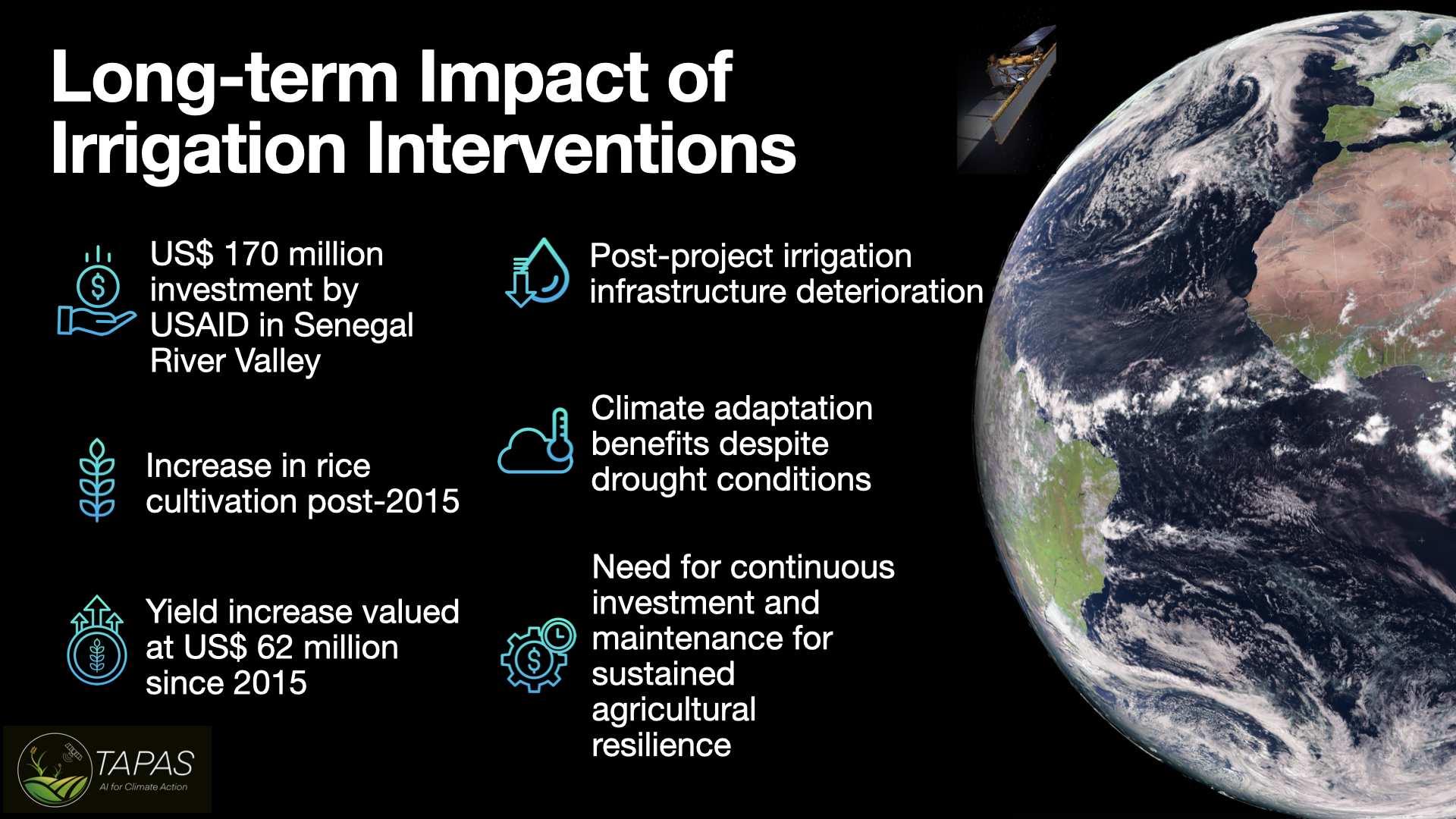Investment in the Senegal River Valley
Paper Link
As part of the large-scale Senegal compact, USAID invested over US$500 million in the Senegal River Valley region. US$ 170 million of this investment was allocated to improving and maintaining the irrigation infrastructure in the region, carried out by the Millenium Challenge Corporation.
Efforts were made to increase dry season (irrigated) rice cropping in the months of March-July, while retaining the rain-fed season, and introducing a winter cover crop of tomatoes or onions over the months of November-March. This final goal of a third crop largely failed, however, our recent publication investigates the attempt at increasing dry season cropping (double cropping) and how effectively the money was invested.
 This infographic shows the main resulting points from our investigation into the region. We find that while the invervention managed to maintain rice production post-intervention, it largely failed on it’s long-term targets. Additionally we find evidence for decreasing water levels in human-made waterways, suggesting a long-term decline in water management and irrigation availability.
This infographic shows the main resulting points from our investigation into the region. We find that while the invervention managed to maintain rice production post-intervention, it largely failed on it’s long-term targets. Additionally we find evidence for decreasing water levels in human-made waterways, suggesting a long-term decline in water management and irrigation availability.
We find the investment return approx. US$62 million since the intervention began. Therefore if current production levels were maintained, recouping the investment would take at least another 15 years.
The accepted manuscript can be accessed here.
